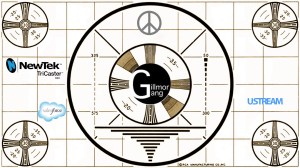It’s been several weeks now, and Clubhouse still hasn’t enabled record/replay. Neither has Twitter Spaces. Facebook just announced a live audio entry too, but no record. With all the drama about Facebook, I’m not expecting much soon, but c’mon guys, let’s get it done.
I’m loving Youtube TV, which lets me cherry pick hours of cable news repetition and cut to the chase. The collapse of one of the two major political parties puts new pressure on the other one to get things done. This edition of the Gang surfaces the oft-referenced collapse of journalism. Cable news takes a complex struggle like the two infrastructure bills and turns it into a horse race. Is it Manchin’s fault or Sinema’s rudeness to the press? Are the Progressives overreaching with not enough strength where it counts, at the ballot box? As Biden’s poll numbers decline, the chances of a Republican takeover of the House in the midterms improve. C’mon guys.
The Beatles continue to amaze, as evidenced by the latest remix extravaganza of the ill-fated Let It Be sessions. Coming as they did in the wake of the fractious White Album, Paul McCartney’s self-appointed leadership of the group spurred a struggle between rehearsals at Twickenham Studios and reconstituted recordings at a makeshift studio in the basement of the group’s Apple headquarters on Saville Row. The later sessions were topped off with a live 42-minute performance on the building’s roof.
51 years later (with a year tacked on thanks to the pandemic) the Let It Be release is deconstructed into book, remixed expansions of the eventual release of the material, and a 3-part 6-hour documentary of the project helmed by director Peter Jackson. As with earlier versions of Sgt. Pepper, The Beatles (White Album), and Abbey Road, the expansions prove over and over again how the Beatles and their producer George Martin seized control of the top of the charts and never surrendered it. Even the steady stream of failures of the Let It Be project illustrated how the band moved to blend the individual personalities of its members and their almost biochemical skills as writers to achieve what is now fairly uniformly perceived as the greatest creative force of the pop, rock, and pre-social worlds.
No small credit goes to the precision and command of the recording process by the engineers of the EMI Studios, which were renamed Abbey Road in the wake of the triumphant album recorded just after the sessions of Let It Be. The studio was fundamentally a laboratory where engineers wore white lab coats and followed a hierarchical structure that constrained climbing the ranks based on seniority and not innovation. It took the Beatles many years to subvert the process, but their global success gave them bargaining power to generate their own material, which then led to expanding recording hours from a single 9 to 5 session for their first record to all night odysseys that burned out engineers and broke open an avenue for young emergent talent.
So it was that 19-year old Geoff Emerick arrived just in time as the Beatles’ decision to end touring and precipitated the experiments that began with Revolver and blossomed with Sgt. Pepper and later Abbey Road. While EMI was slow to adopt the wave of studio innovations driven by the American studios, the careful use of mixing down 3 of the common 4 available tracks produced a composite feel of live and complex stacking of instruments, vocals, and orchestral arrangements. Th4 advent of digital recording and mixing gave today’s engineers led by George Martin’s son Giles the tools to pull apart the interim recordings and produce remixes that went beyond even what the original recordings seemed to capture.
Disney has just released a 4-minute trailer of the enhanced Get Back filming, whetting our appetite for the Thanksgiving special on Disney+. The Beatles’ film career started off smashingly with Hard Days Night, floated off in a marijuana haze with Help, and collapsed miserably with a self-produced TV special Magical Mystery Tour. But the Get Back trailer restores not only the struggles and fighting of the sick-of-each-other prisoners of Beatlemania, but also the magic of the group’s camaraderie and humor. My favorite scene of Help features the Fab Four walking up to identical doors on a London street, and entering into a common apartment on the other side of the wall. The trailer reopens that door for another minute, where the band’s self-prophetic references spurred the shared myth of the Beatles into a reality greater than the sum of its parts.
the latest Gillmor Gang Newsletter
__________________
The Gillmor Gang — Frank Radice, Michael Markman, Keith Teare, Denis Pombriant, Brent Leary and Steve Gillmor. Recorded live Friday, September 24, 2021.
Produced and directed by Tina Chase Gillmor @tinagillmor
@fradice, @mickeleh, @denispombriant, @kteare, @brentleary, @stevegillmor, @gillmorgang
Subscribe to the new Gillmor Gang Newsletter and join the backchannel here on Telegram.
The Gillmor Gang on Facebook … and here’s our sister show G3 on Facebook.

